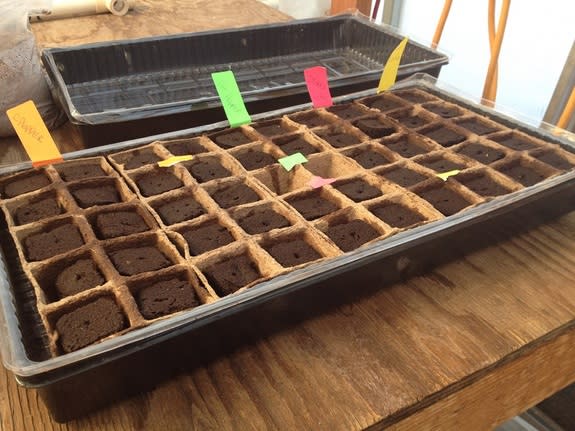Mock Mars Mission: Eating On The Red Planet
HANKSVILLE, UTAH – How do you whip up boxed macaroni and cheese without margarine or butter? That was a problem I faced early in my rotation at Utah's Mars Desert Research Station (MDRS) when another crewmember and I were put on food duty.
Since the role of MDRS is to simulate Mars exploration and make us feel like astronauts, we're encouraged to solve problems ourselves. Our commander, who has been here twice already, quietly worked on other tasks as I combed through cupboards trying to find a substitute.
It's possible there was shelf-stable butter there, but under limited time our solution was to add tuna to the mix. Other crewmates pronounced the concoction as delicious. Our decision to use tinned corn beef at lunch, however, did not go so well. There's a lot to learn as we keep ourselves fed at this facility, which is run by the nonprofit Mars Society. [See photos of the simulated Mars mission]
Walmart run
On our last stop before "Mars," the six members of MDRS Crew 133 wandered a Walmart in Grand Junction, Col. Most of us were on the hunt for our favorite junk food. One crew member emerged with microwave popcorn; another picked up an amazing stash of chocolate.
Shortly after arriving at MDRS, two people zipped back to Hanksville to pick up two large food bins — big enough to fit a toddler inside with ease — that were filled to the brim with healthy "shelf-stable" foods. We then added the junk food to the mix for everyone to share. A bit of fun for the crew during the long days.
Food protocols have changed at MDRS over the years.
"Early on, we did not have realistic food," MDRS director Shannon Rupert told SPACE.com in December. "Crews would just pick up what they wanted when they came to the Hab [MDRS habitat], and they would be reimbursed for that."
Then officials decided all food must be shelf-stable, just like it is in space. For a while, the Mars Society also had an edict that crews must only eat provided food, except if it was cleared beforehand (usually for health reasons). It's a cooking challenge, but Rupert said the crews generally enjoy tackling it.
"We have crews that get excited for the challenge of shelf-stable foods, like freeze-dried fruit and freeze-dried vegetables," she said.
Growing crops
As Mars colonizers would likely be growing plants on long missions, each MDRS crew also nurtures crops in a GreenHab (greenhouse). The growing season starts in December, when the first crew arrives for the six-month rotation season.
On Sunday (Jan. 5), another crewmember and I spent about an hour planting seeds in cubes of soil that each had two small holes punched in the top. While my colleague dropped the seeds and shone a light on the dark cube, I used a pair of scissors to gently push them into the holes. "I feel like a woodpecker," I said at one point.
The crops — which include hot pepper, Ithaca lettuce and mint lettuce — will be too small for us to eat when our rotation ends around Jan. 19. Crews later in the season, however, will be able to enjoy the fruits (and vegetables) of our labor.
Elizabeth Howell is doing a two-week simulation at the Mars Society's Mars Desert Research Station from Jan. 4 to 19. Have a burning question about the mission or a picture you really would like to see from the site? E-mail contact@elizabethhowell.ca for the chance to get your question answered in a future story.
Follow Elizabeth Howell @howellspace, or SPACE.com @Spacedotcom. We're also on Facebook and Google+. Original article on SPACE.com.
Copyright 2014 SPACE.com, a TechMediaNetwork company. All rights reserved. This material may not be published, broadcast, rewritten or redistributed.


